This article was co-authored by Pippa Elliott, MRCVS. Dr. Elliott, BVMS, MRCVS is a veterinarian with over 30 years of experience in veterinary surgery and companion animal practice. She graduated from the University of Glasgow in 1987 with a degree in veterinary medicine and surgery. She has worked at the same animal clinic in her hometown for over 20 years.
There are 8 references cited in this article, which can be found at the bottom of the page.
This article has been viewed 144,444 times.
Does your guinea pig have a lump on its body? If so, that lump could be one of a few things: an abscess (a large pocket of pus), a lipoma (tumor full of fat cells), a skin tumor, or a cyst (fluid-filled lump).[1] It probably won’t be hard for you to see the lump, but only your vet will be able to determine what caused the lump to appear. When you notice a strange lump on your guinea pig, take your guinea pig to your vet for a diagnosis.
Steps
Examining Your Guinea Pig at Home
-
1Look for abscesses on the head and neck. Abscesses under the skin are very common in guinea pigs. They are the body’s attempt to ‘wall off’ an infection and keep it from spreading. Abscesses can form either after a bite from another guinea pig, or if something rough and sharp (e.g., straw) goes through the skin. They can form anywhere on a guinea pig’s body, but the most common locations are the head and neck.
-
2Identify abscesses in your guinea pig’s mouth and jaw. Abscesses can also form in the mouth or jaw of a guinea pig. Abscesses in these areas can become large very quickly.[4] Your guinea pig may look fine on one day, then have a large abscess the next day.
- When you handle your guinea pig, gently open its mouth to see the abscess. If the abscess is in the jaw, you will see a large bump along your guinea pig’s jawline.
Advertisement -
3Examine your guinea pig’s back for cysts. Guinea pigs can get several types of cysts, with the most common being a sebaceous cyst. Sebaceous cysts contain oil from the skin glands that produce oil (sebaceous glands). Sebaceous cysts are typically located on a guinea pig’s back and near the rump, but can form in other places as well. Although they can become very large, cysts are usually about the size of a pea.
- Cysts become a problem if they become large.
-
4
-
5Detect a decreased appetite. Sometimes, a lump can make a guinea pig feel so bad that it doesn’t want to eat. For example, if your guinea pig is not eating its meals and doesn’t want any tasty treats, check its mouth for an abscess.[9] Even if your guinea pig wants to eat, the size of the abscess in its mouth or jaw could make it difficult to chew food.
- Sometimes, a guinea pig will stop eating right before an abscess ruptures (an abscess can sometimes rupture on its own).[10]
-
6Smell your guinea pig’s breath. When you hold your guinea pig, take a quick sniff of its breath. If your guinea pig has a mouth abscess, its breath will probably smell quite unpleasant. The unpleasant smell would be due to infection. Along with bad breath, you may also notice drooling.[11]
-
7Observe changes in behavior. An abscess can be very uncomfortable for a guinea pig. If your guinea pig squeals with pain when you pick it up, seems really tired, or doesn’t want to play with you, it could have an abscess. You may also notice your guinea pig heavily grooming the area of the abscess.[12]
Getting a Veterinary Diagnosis
-
1Take your guinea pig to your vet. If you see a lump on your guinea pig’s body, schedule an appointment with your vet. Your vet will perform different tests to determine the cause of the lump. Do not delay in taking your guinea pig to your vet—if the lump is an abscess, it could make your guinea pig very sick by overwhelming your guinea pig’s natural defenses against bad bacteria.[13]
-
2Explain your guinea pig’s history. During your appointment, give your vet as much information as you can about your guinea pig. For example, talk about your guinea pig’s overall health and when you first noticed the lump.[14] In addition, provide information about your guinea pig’s diet, living environment, and if it has cagemates.
- Your vet will use the information you provide to come up with a diagnosis. Therefore, the more information you provide, the better.
-
3Allow your vet to examine your guinea pig. A physical examination will give your vet important clues about what caused the lump to form.[15] Your vet will weigh your guinea pig, look it over from head to toe, and listen to its heart and lungs. Your vet will pay special attention to the area of the lump.
-
4Allow your vet to perform additional testing. Your vet may want to run some extra tests to confirm the diagnosis of the lump. One type of test is called fine needle aspiration (FNA), during which your vet will use a small needle to withdraw a fluid sample from the lump. Your vet will look at this fluid under the microscope to detect different cell types (e.g., fat cells, white blood cells). Another type of test is a biopsy, which would help your vet diagnose a tumor.[16]
- Your vet would need to sedate or anesthetize your guinea for FNA or a biopsy.
- A fluid sample from the lump can be useful for identifying bacteria. The test to identify bacteria is called a ‘culture.’[17]
Warnings
- Abscesses can get as big as golf balls.⧼thumbs_response⧽
References
- ↑ http://www.guinealynx.info/lumps.html
- ↑ http://dora.missouri.edu/guinea-pig/cervical-lymphadenitis-lumps/
- ↑ http://netvet.co.uk/guinea%20pigs/abscesses.htm
- ↑ http://netvet.co.uk/guinea%20pigs/abscesses.htm
- ↑ https://www.researchgate.net/publication/256480452_Cutaneous_Neoplasia_in_Ferrets_Rabbits_and_Guinea_Pigs
- ↑ http://www.merckvetmanual.com/pethealth/exotic_pets/guinea_pigs/disorders_and_diseases_of_guinea_pigs.html
- ↑ http://www.vcahospitals.com/main/pet-health-information/article/animal-health/guinea-pigs-problems/1070
- ↑ http://www.guinealynx.info/lipoma.html
- ↑ http://netvet.co.uk/guinea%20pigs/abscesses.htm
- ↑ http://dora.missouri.edu/guinea-pig/cervical-lymphadenitis-lumps/
- ↑ http://netvet.co.uk/guinea%20pigs/abscesses.htm
- ↑ http://netvet.co.uk/guinea%20pigs/abscesses.htm
- ↑ http://netvet.co.uk/guinea%20pigs/abscesses.htm
- ↑ http://www.petmd.com/exotic/conditions/skin/c_ex_gp_cancers_tumors
- ↑ http://www.petmd.com/exotic/conditions/skin/c_ex_gp_cancers_tumors
- ↑ http://www.guinealynx.info/lumps.html
- ↑ http://dora.missouri.edu/guinea-pig/cervical-lymphadenitis-lumps/
- ↑ http://www.guinealynx.info/lumps.html
- ↑ http://www.vcahospitals.com/main/pet-health-information/article/animal-health/guinea-pigs-problems/1070
- ↑ http://netvet.co.uk/guinea%20pigs/abscesses.htm
About This Article
Finding a lump on your guinea pig can be scary, but getting it checked out by a vet will give you more peace of mind. It could be one of a few things, like an abscess, skin tumor, or cyst. Look around its head and neck for abscesses, which can be soft or firm and rise up from under the skin. A lump on your guinea pig’s back could be a cyst, which contains skin oils and is often the size of a pea. A lump on your pet’s tail or chest may be a skin tumor. Sometimes, a lump will make your pet feel so ill that it won’t want to eat. It can also make your guinea pig uncomfortable enough that it won’t want to be held or play. Whether your guinea pig exhibits these signs or not, it’s still important to visit the vet so they can run tests to determine the exact cause and treatment for the lump. For more tips from our Veterinary co-author, including how to tell if your guinea pig has a mouth abscess, keep reading!
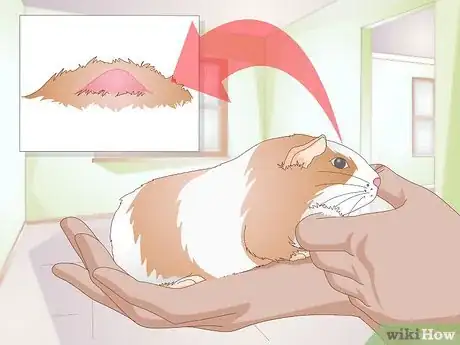
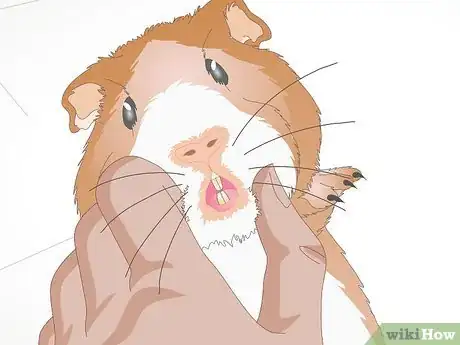
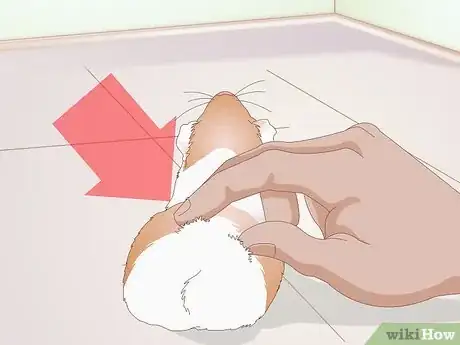
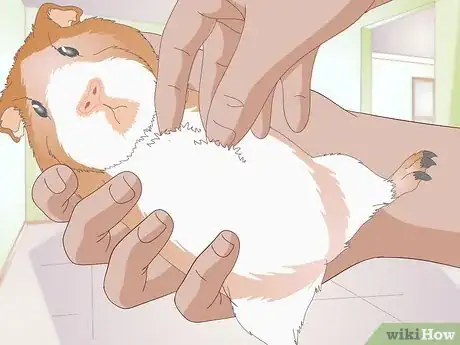

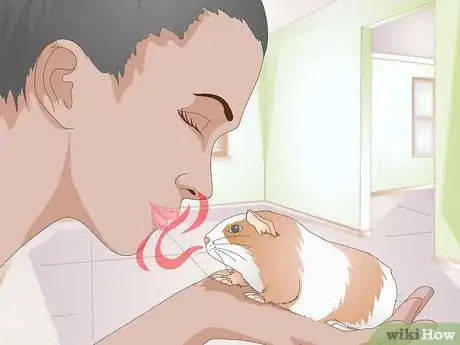


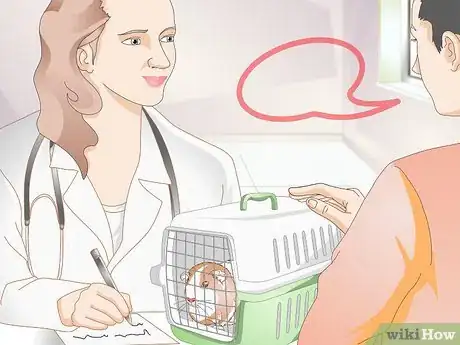
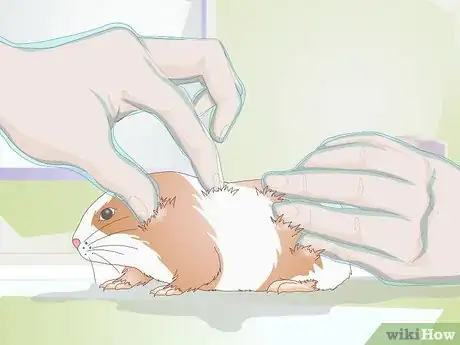
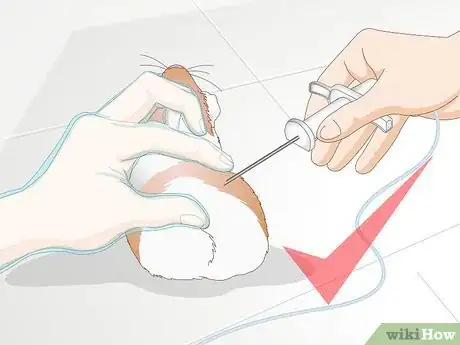




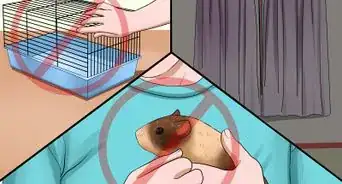

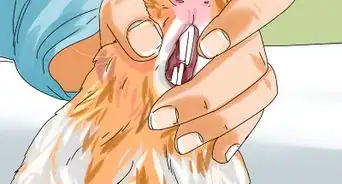


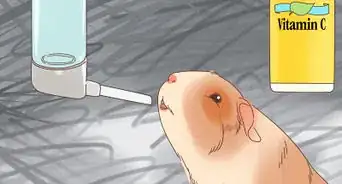
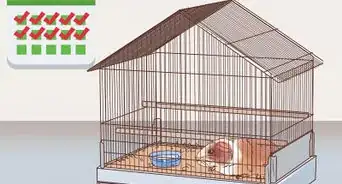












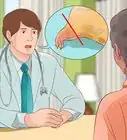



































Medical Disclaimer
The content of this article is not intended to be a substitute for professional medical advice, examination, diagnosis, or treatment. You should always contact your doctor or other qualified healthcare professional before starting, changing, or stopping any kind of health treatment.
Read More...